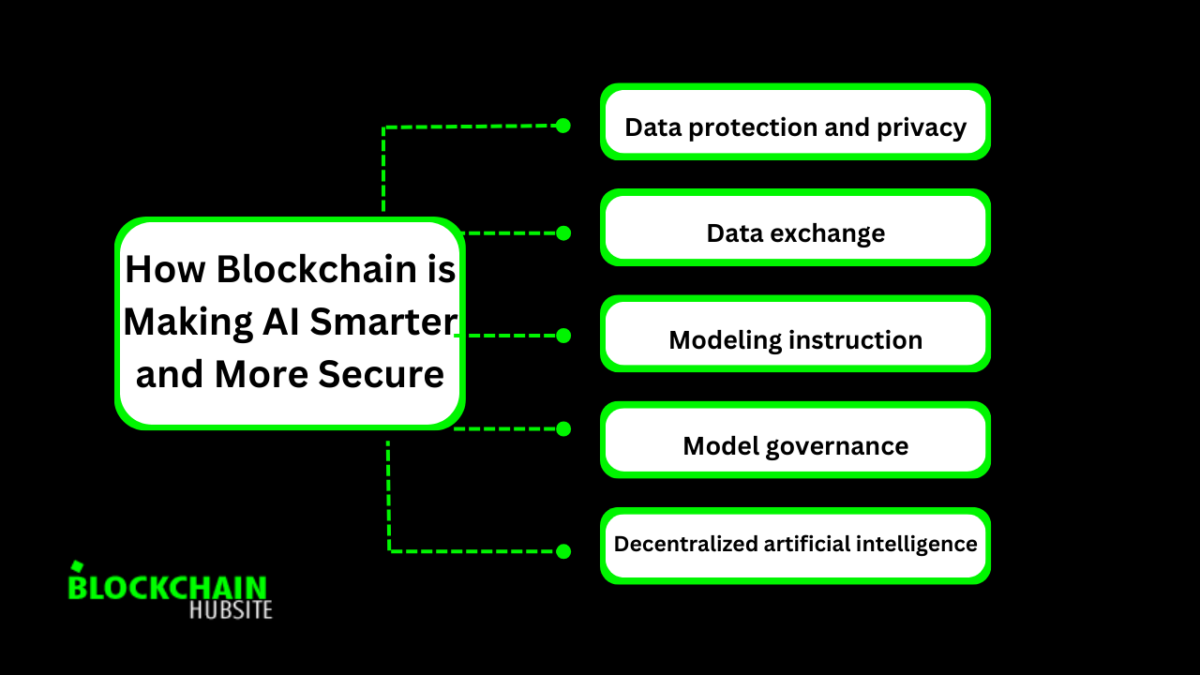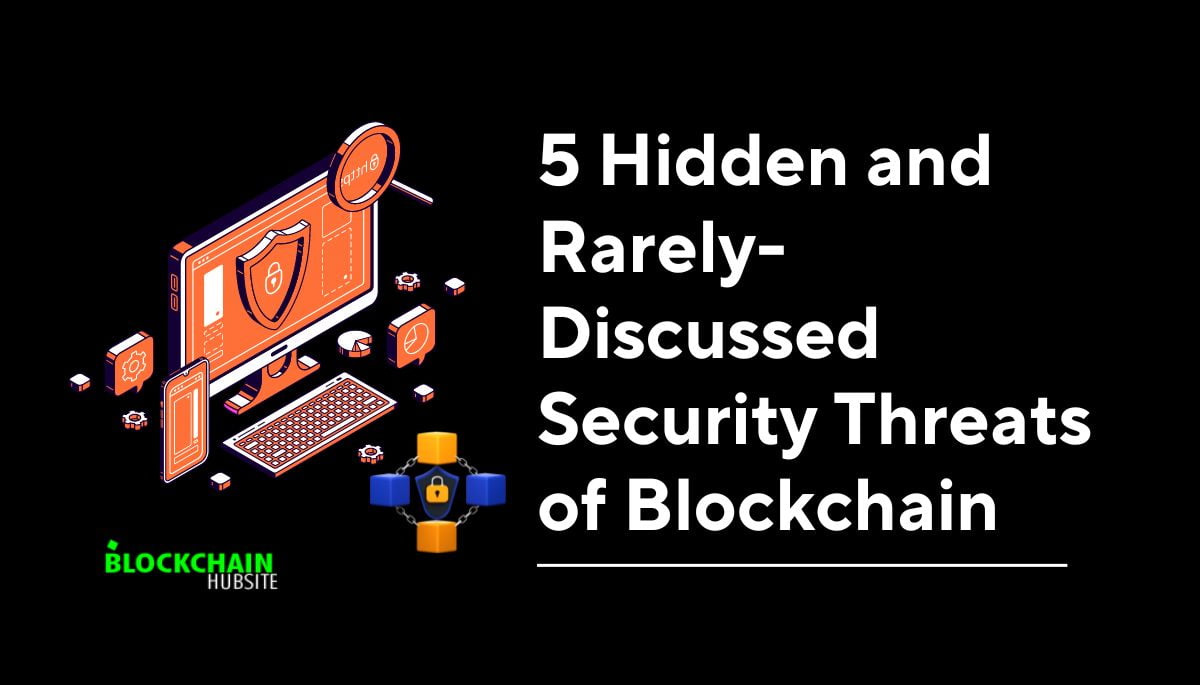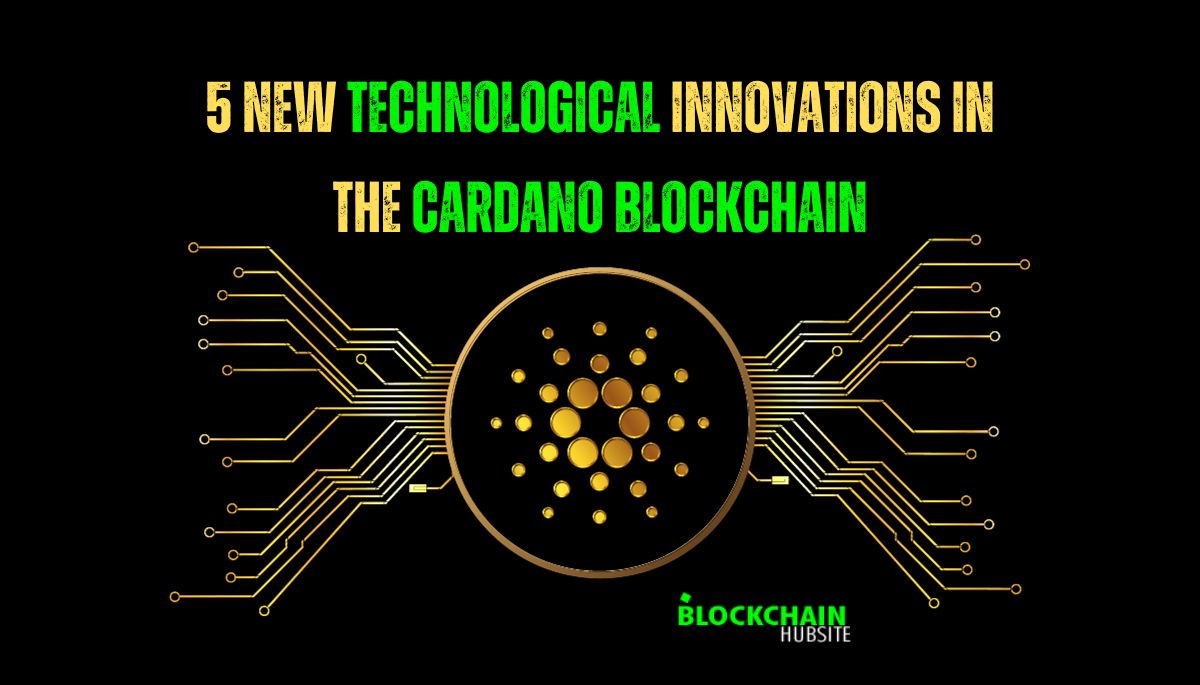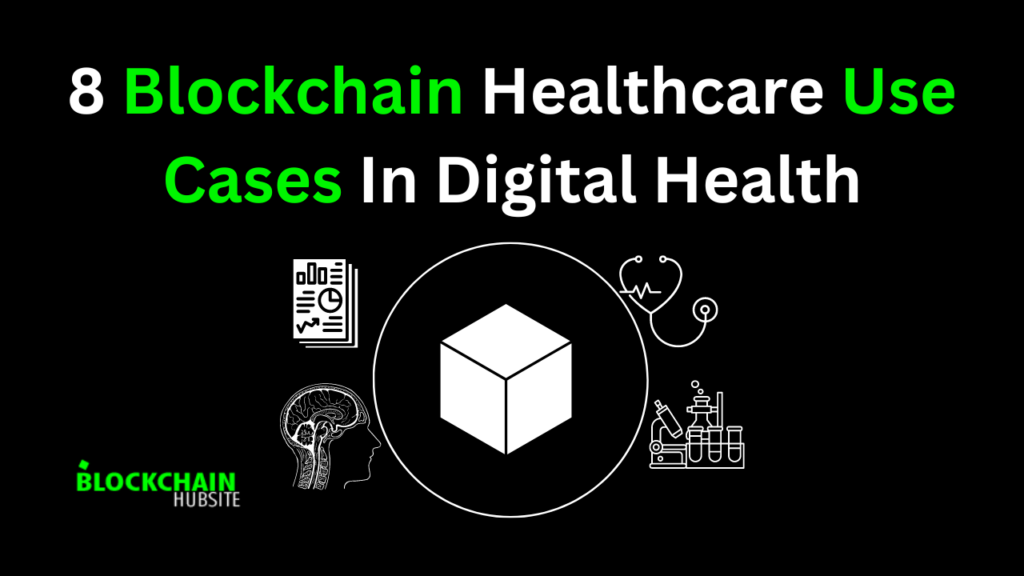
Table of Contents
Introduction
Over the next decade, people’s lives and society will be altered by two revolutionary technologies: blockchain and artificial intelligence. There is growing interest and innovation in both, but some people need to be more concerned about the potential risks of using them.
Gartner predicts that the economic impact caused by blockchain technology will increase rapidly, reaching $176 billion by 2025 and $3.1 trillion by 2030. Similarly, the artificial intelligence software market will be roughly $134.8 billion by 2025.
Blockchain and artificial intelligence (AI) together offer advantages to commercial enterprises. Blockchain enables data security and immutability, fostering trust among participants, while AI models evaluate complex information, extract important data insights, and make sensible choices.
Learn How Blockchain is Making AI Smarter with enhanced security and transparency. This article explores the synergies between blockchain and AI. Also learn how this revolutionary combination can change your business by researching AI and blockchain benefits, challenges, and real-world applications.
What is blockchain at its most fundamental level?
• A new way to think about trust relationships
o No need for third parties to act as middlemen
o Extremely safe
• Distributed trust—many witnesses are better than on
o Peer-to-peer (decentralized) network Public ledger
oConsensus mechanism
oHashing
What is Artificial Intelligence?

The basic idea of artificial intelligence is to simulate the human mind’s capabilities in problem-solving and decision-making by utilizing computers, data, and other technology. It also includes deep learning and machine learning as subfields. These systems employ AI algorithms to learn from data to classify and forecast.
Decision-making, routine chores, and the elimination of human mistakes can all be automated with the help of AI technologies. Technologies like big data, the IoT, and robotics are all made possible by advances in AI. Combining AI with blockchain will continue to pave the way for innovation in the tech sector.
The Turing Test is a way to measure how smart AI is by seeing if people can tell the difference between a machine and another person in a text chat.
Fast data processing is where AI shines, but it can’t replace human creativity or emotional intelligence.
The Impact of AI on Business
Artificial intelligence (AI) automates processes across many industries, including healthcare, transportation, banking, and more.
– In health care, AI helps diagnose by recognizing patterns and triage by using robots.
Using sensors and algorithms in self-driving cars makes them safer on the road.
Automating Routine Tasks using AI
Home automation tools like Amazon’s Alexa let you adjust lights, temperature, and more by speaking to your gadgets.
Siri and other personal assistants use natural language interactions to create to-do lists, set reminders, and make online purchases.
– Self-driving cars will change how people get to work by cutting traffic and making ride-sharing possible.
Evaluating the Effects of AI
Artificial intelligence (AI) significantly increases both productivity and effectiveness. But it may take away many jobs.
– Concerns about privacy rights, accountability, and harm caused by AI choices need to be addressed from an ethical point of view.
– Overall benefits can be reached by carefully weighing the pros and cons.
The Future of Artificial Intelligence
Constant advancements in speech recognition and machine vision will lead to the widespread adoption of AI.
The advent of robotics and predictive analytics will revolutionise many areas of industry.
AI Future Preparation
– AI experts will be in demand as technology takes over some jobs. In the future, new economic sectors will develop.
AI will have far-reaching effects on many aspects of society, including the classroom, the hospital, the workplace, the home, and the entertainment industry.
– It is important to have responsible oversight of AI development if we want to use AI to build a fair future.
How Blockchain is Making AI Smarter
Blockchain and AI are emerging technologies that can enhance one another. Combining them can improve data management, security, and privacy in applications such as healthcare and finance.
Blockchain increases transparency in complicated AI systems, increasing reliability and trust and incentivizing decentralized data exchange to construct more robust models.
Blockchain smart contracts can automate agreements and revenue sharing in AI. Blockchain assists in identifying AI biases, allowing for more ethical and fair systems. However, blockchain has speed and scalability limitations that pose issues for resource-intensive AI. Blockchain and AI generally offer secure, open, and decentralized data and model management for trusted and accountable AI across various industries.
Data protection and privacy: Blockchain technology can aid in the security and protection of sensitive data used by AI algorithms. Because blockchain is a tamper-proof ledger, data cannot be changed or destroyed without all parties’ approval. This can help to prevent data breaches and protect individuals’ privacy.
Data exchange: Blockchain can aid in data sharing between various AI models and systems. Giving AI models access to more data can increase their accuracy and performance. It can also assist in lowering the cost of data collection and storage.
Modeling instruction. Blockchain may be used to train AI models on massive data sets. This can be accomplished by dividing the data among a network of nodes so that they can train the model concurrently. This can accelerate the training process and enhance model accuracy.
Model governance. Blockchain technology can be used to regulate the use of AI models. This can be accomplished by developing a decentralized platform where users can vote on model usage decisions. This can contribute to the responsible and ethical use of AI models.
Blockchain powered by artificial intelligence. AI can help blockchain networks enhance their performance and scalability. This can be accomplished by employing artificial intelligence to optimize consensus methods, handle transactions, and detect fraud. Artificial intelligence (AI) can create new blockchain applications, such as decentralized autonomous organizations (DAOs).
Decentralized artificial intelligence. Decentralized AI systems are possible to build using blockchain. This indicates that AI models would be handled by a network of nodes rather than a single entity. This can help to improve AI systems’ security and privacy.
AI-powered supply chains. Blockchain technology can be utilized to build secure and transparent supply networks. This is accomplished by employing blockchain-based records to track the flow of goods and materials along the supply chain. This can help to enhance efficiency, eliminate fraud, and assure product safety.
AI-powered healthcare. Blockchain technology can enhance healthcare data’s security and privacy. This can be accomplished by keeping patient information on a blockchain ledger that only authorized people can access. This can help to preserve patient privacy and prevent data breaches.
AI-powered finance. Blockchain technology can be utilized to build secure and transparent financial systems. This can be accomplished by employing blockchain-based records to track financial transactions. This can help to decrease fraud and improve financial market efficiency.
AI-powered governance. Blockchain can be used to promote government transparency and accountability. This can be accomplished by storing government records on a blockchain ledger that the public can access. This has the potential to eliminate corruption and increase public trust in government.
AI and Blockchain Use Cases

Here, we’ll examine various potential use cases that illustrate the potential impact of integrating AI with blockchain.
Leveraging Blockchain for AI Security
Blockchain and decentralized infrastructure can serve as encryption-backed barriers for AI systems. In this concept, AI systems can be deployed with built-in protections that limit their capacity to be abused or used for adversarial purposes. With tamper-proof decentralized infrastructure like blockchains, smart contracts, and oracles, private keys can enforce these conditions by encoding the precise limits within which AI can access multiple key systems.
Decentralized, blockchain-based systems are built to prevent manipulation by various enemies, and similar security precautions may also include the employment of hostile AI bots.
Blockchain security and AI model utility can limit attack vectors and improve the security of AI applications, allowing businesses to use AI to its fullest extent while maintaining a high level of security backed by cryptographic guarantees.
AI and Blockchain for Supply Chain Optimization
A blockchain-based computer program called a “smart contract” consists of code that specifies specified conditions that, when satisfied, cause certain outcomes to occur. When it comes to utilizing the power of artificial intelligence, smart contracts’ inherent self-executing nature offers some advantages. AI models integrated into smart contracts could use particular conditions to carry out activities, such as identifying the need for extra inventory and placing an order with a third-party supplier.
Through the digitization of paper-based procedures and by making it possible to trace items in real-time from manufacturing to delivery, the combination of blockchain and AI may also increase transparency and lessen the likelihood that fraud will have an adverse effect. Blockchains and AI-driven predictive analytics enable businesses to improve inventory management, understand demand patterns, and make cost-effective decisions.
Other industries, including disaster relief, may also profit from this use case. Humanitarian organizations may benefit from AI-driven analytics and supply chain tracking based on blockchains to maximize resource allocation during natural catastrophes. Emergency relief activities can be streamlined so that supplies are given to the best place by giving real-time data on the availability and location of crucial supplies.
Using Blockchain to Verify Authenticity of AI-Generated Content
Deep learning models with powerful capabilities, such as DALL-E, Stable Diffusion, and Midjourney, have demonstrated the immense potential of producing images and other media types solely from text prompts in natural language (or by utilizing other media types).
These models show how AI has the potential to revolutionize productivity and expand the reach of human creativity. Still, they also show how AI could be used adversarially to influence public opinion by distributing propaganda and false information or by producing deep fakes and other false synthetic media.
Blockchain technology, which is based on cryptography and encryption, can assist in establishing the veracity of images, video files, text documents, or other types of media by confirming the source of a piece of content cryptographically and whether it has been modified. In addition to tamper-proof timestamping, this kind of cryptographic watermarking technology can confirm the integrity of “who knew what when.”
Cryptographic timestamping and validation make it easier to develop decentralized systems for content curation, verification, and distribution in a future where it will be crucial to distinguish between information produced by humans and artificial intelligence.
By guaranteeing that the media they transmit is unaltered, authentic, and supported by a transparent and verifiable history, these platforms could enable content creators and users to build trust in the information being spread.
Additionally, non-fungible tokens (NFTs), a type of blockchain token, offer a way to overcome the difficulties in establishing the origin and authenticity of digital content. Unique digital assets known as NFTs can signify ownership and establish the provenance of numerous materials, including pictures, videos, text, music, and other file formats.
Creators can create a digital fingerprint that guarantees the content’s traceability on-chain by giving it an NFT. An NFT makes a piece of content’s origin, ownership history, and any later revisions transparent and simple to verify. Standardizing these technologies could promote greater accountability for online material, where publishers would have more incentive to maintain the integrity of their work, and the general public would have more confidence in their capacity to distinguish between real content and content that has been altered.
Analytics with AI Models and Blockchain Data
The capacity of blockchain technology to give unmatched data provenance is one of its most useful features. One of the greatest ways to guarantee data integrity over time may be to store data in a highly secure, decentralized blockchain-based network. Blockchain networks are, therefore, an ideal environment for big data analytics.
The massive quantities of data generated on-chain could be utilized by large-scale analytics utilizing advanced machine learning models as blockchain technology increasingly supports significant aspects of human economic and social activities. Thus, these models could recognize broad trends and provide actionable intelligence using predictive analytics, enabling organizations and consumers to make knowledgeable choices regarding the opportunities arising from the on-chain economy.
Additionally, AI models may aid in calculation optimization for algorithms used in blockchain consensus systems, such as Bitcoin mining, reducing latency and lowering the computational demands on blockchain nodes.
AI Integration in Decentralized Finance
Anyone with an Internet connection can use transparent financial services that use peer-to-peer transactions and immutable smart contracts thanks to decentralized finance (DeFi). The DeFi ecosystem has experienced tremendous expansion. AI models could benefit from the widening range and complexity of financial services provided by leveraging DeFi as an economic layer to carry out tasks and activities according to specified directives.
The on-chain financial stack of the Web3 sector could be used by a huge language model that is securely connected to the Internet to carry out normal chores requiring payments or economic exchange. Because of the intrinsic modularity of blockchain applications, AI models might execute massive interconnected loops of financial transactions without the need for intermediaries or an opaque, paper-based financial system.
DeFi applications with AI-powered automated investing strategies can also provide new financial services supported by decentralized, open, and transparent infrastructure. Combining the two technologies could also enable automatic compliance and fraud-detection systems powered by machine learning algorithms due to the decision-making powers of AI and blockchain’s effectiveness in documenting real-time economic activity.
Healthcare Applications of AI and Blockchain
Sensitive data can be stored securely in some blockchain implementations, which sophisticated AI models can then use to evaluate health data, spot patterns, and make precise diagnoses based on x-rays and records. Furthermore, cutting-edge encryption methods like homomorphic encryption might make it possible to execute computations on this data without compromising data privacy.
AI and blockchain technology can improve data management, privacy, and security in the healthcare industry by enabling the safe storage and exchange of patient records, data from medical research, and other sensitive information. This would make it easier for researchers in the fields of healthcare and lifespan to work together across geographical distances while maintaining the greatest levels of data security.
Blockchain technology might be used as a foundation for data storage, allowing for the development of AI-driven diagnostic tools and personalized treatment plans with greater data privacy. This would result in a more effective and individualized healthcare system.
Improving AI Transparency with Blockchain
The need for more transparency in existing deep learning models’ decision-making processes is a problem. Even specialists sometimes find it difficult to explain why a particular model produces a certain output when presented with a particular input due to the extreme complexity of these models, which occasionally comprise hundreds of billions of parameters.
The inherent transparency of blockchain networks can help address some of the problems associated with this lack of transparency, even though this opacity can frequently be a property of the underlying deep-learning architectures, and creating AI models that can explain or indicate their decision-making is ultimately up to AI researchers.
Blockchains can help AI models give a clear operational framework by facilitating a transparent data record. In the end, this contributes to increased integrity of the recommendations produced by AI models by enabling the study of audit trails on the decision-making habits of algorithms and the usage of an immutable data ledger to reveal what data the models depend on.
Decentralized Data Storage for AI Models
Extremely big data sets provide a foundation for many AI algorithms. Data is simply one element, but this training data greatly impacts the AI system’s capabilities. Future training data integrity preservation and exact provenance could be made possible via decentralized storage options by blockchain-based systems like Filecoin, IPFS, and Arweave. Innovative encryption methods also enable training deep learning models on encrypted datasets while maintaining anonymity and privacy, as was already discussed.
Integrating blockchain-based storage into the deep learning stack may improve AI systems’ security and dependability while fostering openness and confidence in their judgment.
AI-Assisted Smart Contract Development
The efficiency of smart contract developers can be greatly boosted with the introduction of AI-assisted technologies like GitHub Copilot. To create a brand-new class of Web3 applications, smart contract applications could be further enhanced using AI-powered APIs that include analytics from real-world sensors, sentiment analysis, or generative models.
Generative AI for Web3 Gaming
By allowing game developers to easily generate entire game worlds, in-game assets, non-player characters, and scripted in-game events and by enabling them to codify game mechanics using natural language and generative AI models while imprinting these parameters into the game’s logic on-chain, AI can also be used to unlock completely new Web3 gaming experiences. With open-source code and the generative capabilities of AI models, a group of gamers could create entire games.
Blockchain AI: Challenges and Considerations
Many businesses can profit from the combination of AI with blockchain technology, but several obstacles must be overcome to realize the promise fully. AI models have historically struggled with data collection since they need to link to various datasets from various sources. For these technologies to be used to their full potential, interoperability across various blockchain networks and AI platforms is essential. Standards must be established to improve connectivity and guarantee compatibility between the two systems.
Additionally, to support user privacy requirements and preserve user confidence, data privacy frameworks may need to be revised to address the difficulties presented by the integration of AI and blockchain.
In addition, although both technologies can alter fundamental social processes, they are relatively little known to the general public. Education about the advantages, dangers, and factors of integrating blockchain and AI could raise public confidence in using these technologies and boost consumer demand for AI systems with built-in safety features.
In addition, although both technologies can alter fundamental social processes, they are relatively little known to the general public. Education about the advantages, dangers, and factors of integrating blockchain and AI could raise public confidence in using these technologies and boost consumer demand for AI systems with built-in safety features.
Conclusion
Blockchain technology significantly improves AI capabilities and security. Blockchain creates a decentralized, impenetrable data record, allowing AI systems to obtain more trustworthy, verifiable data from various sources. This produces more precise insights. The transparency of blockchains makes it easier to audit AI decision-making. Smart contracts also automate data governance, giving people and companies more control over sharing their private data. However, the combination of blockchain with AI is still in its infancy and holds the potential for more advanced, moral, and dependable AI systems in the future.




